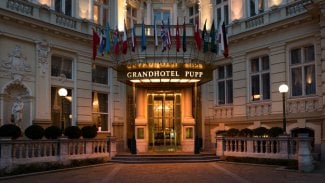dlm_controld
NAME
dlm_controld - daemon that configures dlm according to cluster events
SYNOPSIS
dlm_controld
[OPTION]...
DESCRIPTION
The dlm lives in the kernel, and the cluster infrastructure (cluster
membership and group management) lives in user space. The dlm in the
kernel needs to adjust/recover for certain cluster events. It's the job
of dlm_controld to receive these events and reconfigure the kernel dlm as
needed. dlm_controld controls and configures the dlm through sysfs and
configfs files that are considered dlm-internal interfaces; not a general
API/ABI.
The dlm also exports lock state through debugfs so that dlm_controld can
implement deadlock detection in user space.
CONFIGURATION FILE
Optional cluster.conf settings are placed in the <dlm> section.
Global settings
The network protocol can be set to "tcp" or "sctp". The default is tcp. <dlm protocol="tcp"/> After waiting timewarn centiseconds, the dlm will emit a warning via netlink. This only applies to lockspaces created with the DLM_LSFL_TIMEWARN flag, and is used for deadlock detection. The default is 500 (5 seconds). <dlm timewarn="500"/> DLM kernel debug messages can be enabled by setting log_debug to 1. The default is 0. <dlm log_debug="0"/>Disabling resource directory
Lockspaces usually use a resource directory to keep track of which node is the master of each resource. The dlm can operate without the resource directory, though, by statically assigning the master of a resource using a hash of the resource name. <dlm> <lockspace name="foo" nodir="1"> </dlm>Lock-server configuration
The nodir setting can be combined with node weights to create a configuration where select node(s) are the master of all resources/locks. These "master" nodes can be viewed as "lock servers" for the other nodes. <dlm> <lockspace name="foo" nodir="1"> <master name="node01"/> </lockspace> </dlm> or, <dlm> <lockspace name="foo" nodir="1"> <master name="node01"/> <master name="node02"/> </lockspace> </dlm> Lock management will be partitioned among the available masters. There can be any number of masters defined. The designated master nodes will master all resources/locks (according to the resource name hash). When no masters are members of the lockspace, then the nodes revert to the common fully-distributed configuration. Recovery is faster, with little disruption, when a non-master node joins/leaves. There is no special mode in the dlm for this lock server configuration, it's just a natural consequence of combining the "nodir" option with node weights. When a lockspace has master nodes defined, the master has a default weight of 1 and all non-master nodes have weight of 0. Explicit non-zero weights can also be assigned to master nodes, e.g. <dlm> <lockspace name="foo" nodir="1"> <master name="node01" weight="2"/> <master name="node02" weight="1"/> </lockspace> </dlm> In which case node01 will master 2/3 of the total resources and node2 will master the other 1/3.OPTIONS
-d <num>
Enable (1) or disable (0) the deadlock detection code.
-D
Run the daemon in the foreground and print debug statements to stdout.
-K
Enable kernel dlm debugging messages.
-V
Print the version information and exit.
-h
Print out a help message describing available options, then exit.
SEE ALSO
groupd(8)



















